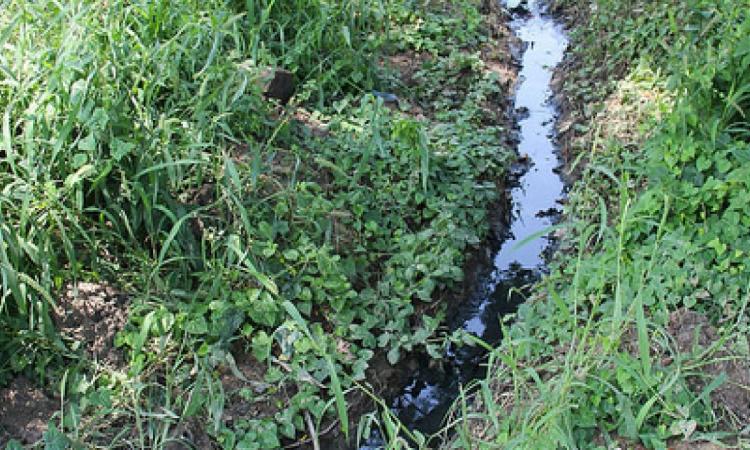
Why should we care about greywater treatment in schools?
Government schools in the arid and semi-arid region in the Deccan India are grappling with water security issues. The absence of wastewater management exposes children to health risks, while inadequate water supply for sanitation leads to unhygienic conditions, which disproportionately and negatively impacts girls. In schools, the lack of wastewater management poses health risks and the potential for greywater reuse remains underexplored.
ATREE’s women-led team of scientists and young researchers working on water science and social science aspects of wastewater treatment identified that government schools in semi-arid southern India are particularly vulnerable to wastewater related health risks while also experiencing irregular freshwater supplies. These schools also have access to fewer resources as compared to their private counterparts. Treating greywater (generated from kitchens, bathrooms, house cleaning) from schools has the potential to reduce human and environmental health risk while also reducing dependency on freshwater sources.
Baseline data on local water and wastewater quality and supply are crucial for designing location-specific treatment systems. In the context of countries in the global south like India, paucity of data on water, wastewater, and water quality at the school level implies that even when treatment systems are implemented, they can be either over-designed or under-designed. The two-fold implication for such design interventions are a) wastewater treatment maybe suboptimal and b) resources are either being under allocated or overallocated for building treatment systems.
Early efforts at collecting school-levels data on wastewater contaminant profile continue to be sporadic and concentrated in the global north. Moreover, evidence indicates that collecting data on wastewater contaminant load from schools is expensive and resource intensive.
AquaWISE for greywater treatment
AquaWISE was developed as an evidence-based decision support tool for optimal deployment of Nature-based Solutions (NbS) for greywater treatment in schools. The tool can minimise or eradicate the need for costly and time-consuming baseline data collection while also generating school-specific wastewater treatment NbS. AquaWISE allows users to select from a menu of treatment options based on their desired end use of treated water.
How does AquaWISE address the challenge of designing school-specific treatment interventions?
Using a combination of social science and natural science methods, a survey of 23 government schools in urban, peri-urban, and rural areas around Bengaluru, India was conducted.
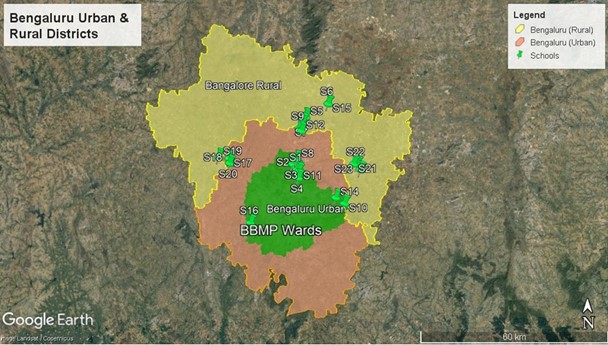
Data on student and adult population of the schools, water sources and quantity, wastewater disposal practices, food preparation practices, and the location of the schools (rural, urban, peri-urban) were crucial inputs in developing the AquaWISE backend algorithm.
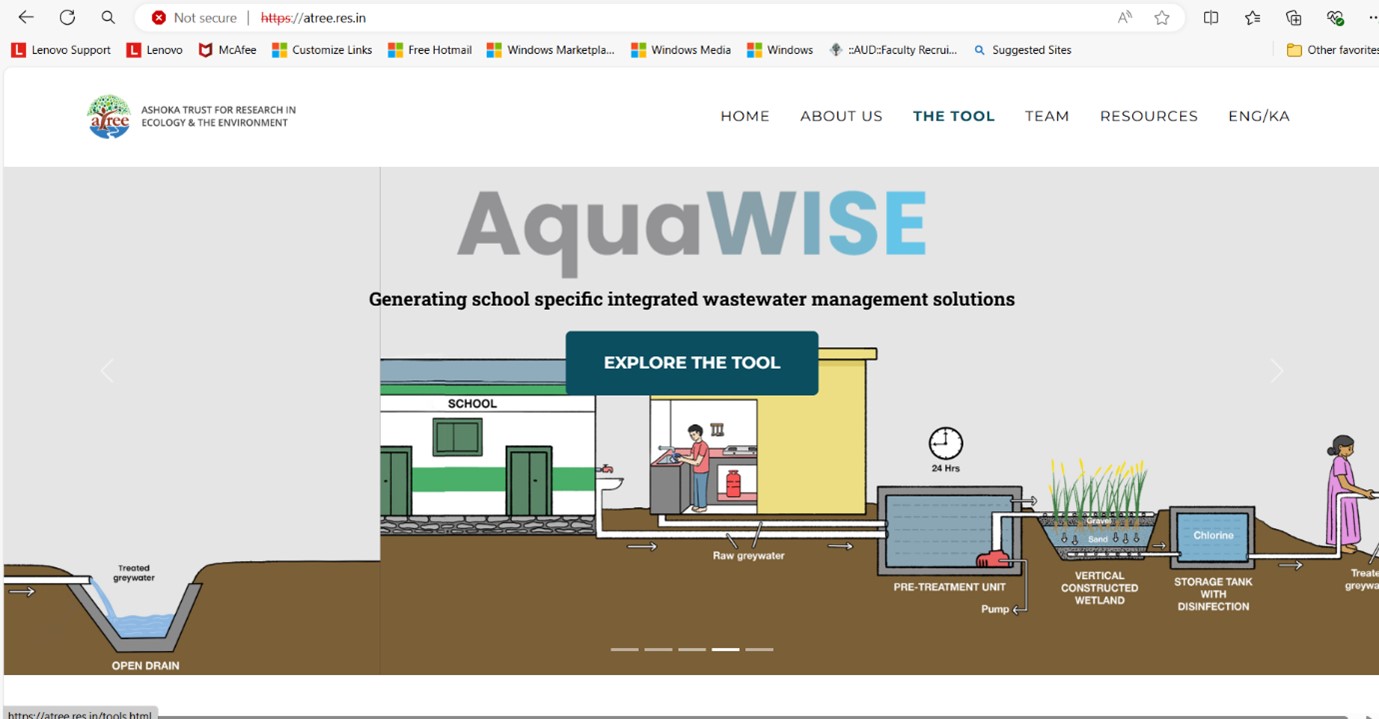
The webtool requires minimal inputs from the users. As shown in Figure 2, the users are expected to know the region (urban, rural, peri-urban), type of school (lower primary, higher primary, or high school), the sources of water supply (public supply or private supply), the number of children and adults in the school, if they have an operational kitchen, and the size of vacant land available within the school compound. Finally, the users have to select the final use of the treated greywater (treat and release OR treat and reuse for flushing or irrigation).

Figure 3 below details an example for a hypothetical urban higher primary school which has 150 students and 14 teachers. The school has a vacant area of 50 sq. meters and has a working kitchen that provides mid-day meals. In this case, the option of treating and releasing the greywater has been selected.
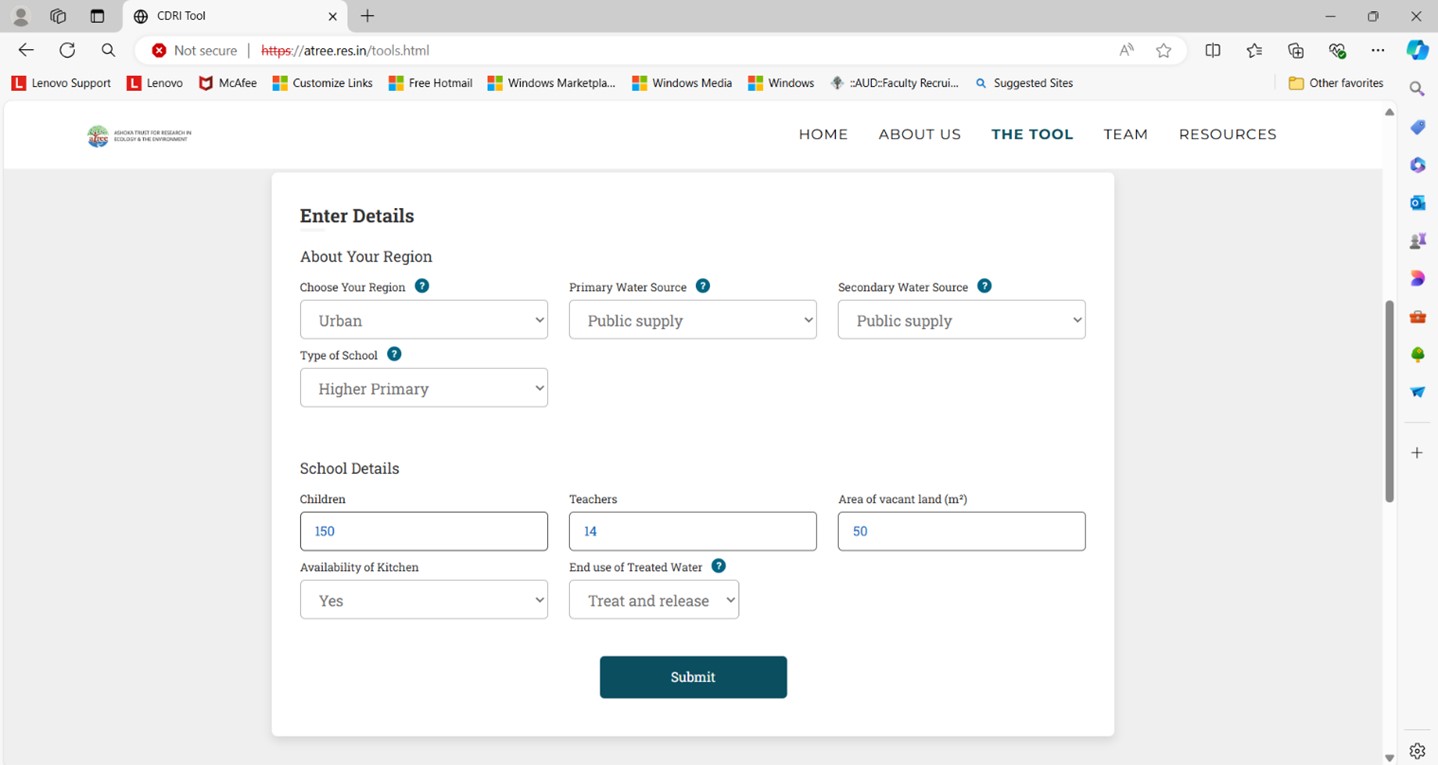
AquaWISE then generates the school-specific design parameters and the guiding CAPEX costs for the best suited treatment systems ranked by their area requirements (Figure 4). Users can learn more about each of the suggested interventions by going through the know more tab.
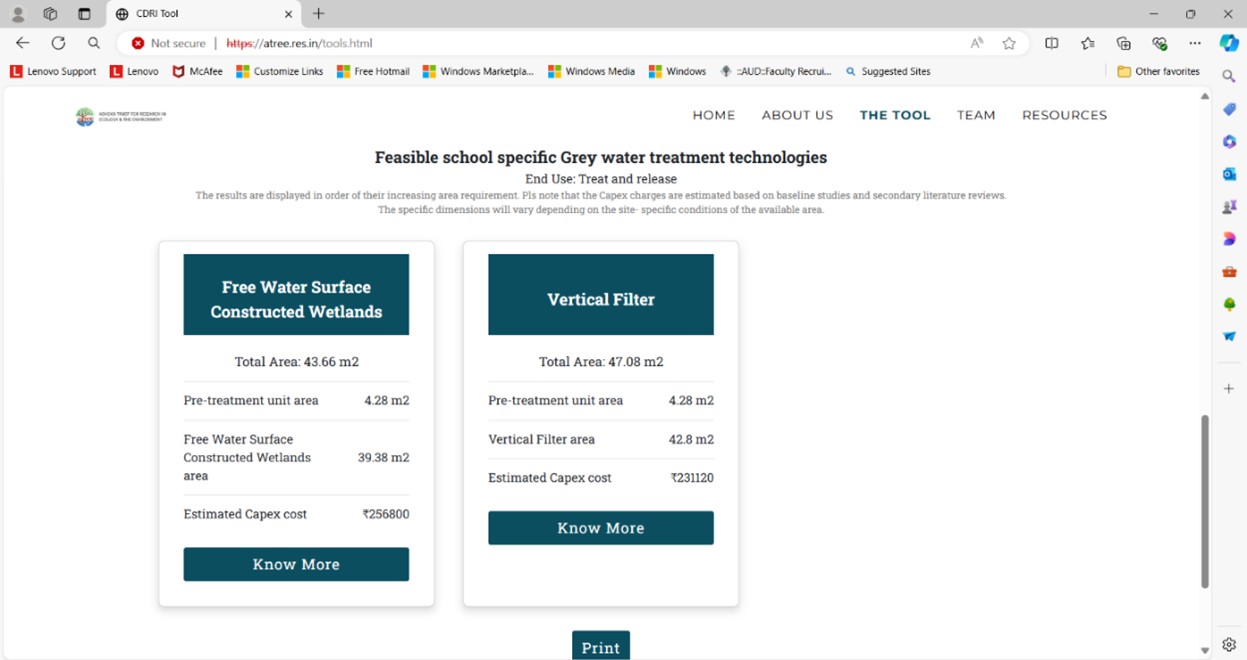
User friendly solution for practitioners and policy makers
AquaWISE offers a user-friendly solution for practitioners and policymakers to select appropriate wastewater treatment and reuse options for schools. The algorithm translates minimal user input data into output tables (showing treatment option with guiding CAPEX estimates), matching school requirements regarding available area and intended water use.
For instance, schools aiming to reuse water for flushing require lower organic matter levels (< 10 mg/l) levels and residual chlorine (indicating absence of pathogens) compared to those discharging into storm drains, influencing costs and area requirements. By utilising this tool, practitioners can effectively tackle water security issues in schools. For future research, there is potential to extend the applicability of AquaWISE in different settings such as mountainous, well drained alluvial and other such regions.
Acknowledgments
We extend our sincere gratitude to the Coalition for Disaster Resilient Infrastructure for funding this work. Additionally, we are grateful to the team at ATREE for their technical support in building the decision support tool. We would like to especially acknowledge the contributions of Samahita Devraj, Rachita Devi, Ishana Sundar, Arun Kumar, Sreekuttan, and Shiva Subramanya S for their efforts in water quality assessment, social science surveys, and the development of AquaWise.
Priyanka Jamwal is a Senior Fellow at ATREE and can be contacted at priyanka.jamwal@atree.org
Durba Biswas is an independent researcher and consultant and can be contacted at biswas.durba@gmail.com
/articles/aquawise-decision-support-tool-greywater-treatment-solutions